
10 Strange Things Made Out of People
Posted by S. E. Batt, Toptenz, 13 October 2015.
There’s a lot of talk about the resources that we take from the Earth. From animal skins to the oil under the floor, each resource has its own sustainability concerns and ethic issues. What about the people, however, that turned to what lies within to achieve their goals? Here are some of the strangest things that have been made from sweat, blood, and tears - sometimes quite literally.
10. The Sedlec Ossuary
As far as well-praised churches go, the Sedlec Ossuary in the Czech Republic looks nothing special from the outside. Taking the appearance of ‘an average old medieval gothic church’, it’s hard to think why anyone would want to visit it. It’s when you enter the church, however, you see just why it managed to get a name for itself.
The Sedlec Ossuary contains many artistic features, all made out of human bone. This was due to the fact that, in 1278, King Otakar II sent Henry the abbot of Sedlec off to Jerusalem on a diplomatic mission. Before he returned, Henry managed to bring back some soil from the Holy Land and blessed Sedlec Ossuary with it. This caused the church to be a very hot and trendy place to be buried in, with a lot of rich people approaching Sedlec to have their bodies stored in the holy church. The abbot’s blessing caused a total of 30,000 people to approach the church with their burial request, including plague victims and casualties of the Hussite wars. The count got so high, they had to make a separate crypt to store the corpses.
There were so many bones lying about, it was decided that something had to be done. František Rint was employed for his wood crafting skills to make something better out of the piles of bones the church had within it. Who knows what the commissioner had in mind for Rint to make, but Rint had his own ideas, making crafts from chandeliers to coats of arms from human bones. You can get a tour of the Sedlec Ossuary, but expect a lot of bone puns from the guide.
9. Jewellery
There are plenty of reasons to brush your teeth. If you’re careless about the general health of your body, you’ll probably care more for the financial troubles of having your teeth fixed. If you want a little more encouragement, however, perhaps consider your teeth being sold as jewellery one day.
Artist Polly Van der Glas, like most jewellers, enjoys making rings. Unlike most jewellers, she decides to skip the diamond or opal on the top, choosing instead to put a dentist’s dream as the jewel of the piece. As for why she made this decision, the official Van der Glas website states this as her motive:
“When attached to the body, we praise hair and teeth that adhere to the rules. They are key sites where body beauty is defined. Yet when they are shed, their meaning and value undergoes a dramatic transformation. Van der Glas explores this transformation in meaning, and uses it to destabilise ideas about beauty.”
Just make sure you don’t sleep with the ring under your pillow. The tooth fairy would die from a heart attack.
8. A Lyre
If you have a problem of getting music out of your head, this is probably not the best way to go. Kept within the Metropolitan Museum of Art is one of the more grisly ways to make a musical instrument. Dating back to the 19th Century, it was believed that the lyre made out of a human skull came out of South America, but was eventually relocated to potentially coming from Central Africa.
Nothing in the history books dictate how the lyre came to be - no tribes or traditions held the idea of a lyre made of a skull - but given the antelope horns attached, it’s more likely that it was a craft tradesman trying to cash in on the then-limited knowledge of the world by saying it was from some ferocious monster. He probably hoped the prospective buyer would dance to his tune - in more ways than one.
7. The Apex Predator
Sometimes, the most frustrating part of socialising is getting dressed for the occasion. Do you go with the expensive suit? Or is that too much? Maybe something more casual? Surely, all of your problems would be solved if you knew you had a suit made out of human hair in your wardrobe.
The ‘Apex Predator’ suit, listed by Fantich & Young, is a black suit made out entirely of human hair. If that wasn’t enough for you to rush out and buy one, the shoes that come with it has their soles lined with dentures, and the suit itself sports eyeballs on the front for decoration. Don’t worry - the eyes are made out of glass. So why did they do it? Young himself explained his rationality:
“The concept of all of our work is mixing Darwin’s ideas and theories of evolution and putting them into a sort of supernatural context, which is a contradiction, but contradictions create tensions and tensions create ideas. It’s really like nature and super nature put together.”
Still no mention as to how you’re supposed to get the suit dry cleaned. Perhaps with shampoo?
6. Household Items
Getting all the utensils you need to live in a new home can be a huge hassle. You need to get the pans, some cutlery, some furniture, toiletries - it can take one mammoth shopping trip to get them all. Why go through all of that, however, when you can use something a lot closer to home?
This is the thought process that went through the minds of a pre-Aztec civilization residing in the ancient city of Teotihuacan. When somebody died, the citizens quickly descended using stones as knives to part the flesh from the much-desired bone. It was essential to get to the bone as quickly as possible, before the bones became so brittle that they would be unusable for bone crafting. Once obtained, the bones would be crafted into all kinds of household items, such as spatulas and buttons.
There seemed to be some rule and regulation that were laid down before the tribes began to strip the skin off of all dead corpses in the area. Archaeologists digging in the area never once found a bone craft that was crafted from a foreign skeleton - they were all from the tribe that lived there. They also did not use the bones of children, presumably because they would be too weak to work with. Next time you’re looking to replace some cutlery, try not to eye up your grandma.
5. Xipe Totec Priest Ritual Clothing
If you ever find yourself being asked to help perform a ritual for Xipe Totec priests, perhaps leave your Sunday best at home. And leave whoever asked you, while you’re at it.
Xipe Totec is the name of a god worshipped in Aztec times. He seemed like a decent enough fellow; he cured sicknesses, took care of the season of spring, supported the people in times of war, and helped young males transfer through into adulthood. When you realise that the period of March dedicated to worshipping him was called ‘Tlacaxipehualiztli’ - meaning ‘the act of flaying men’ - you can see why the people who worshipped this god made this list.
Preparing the suits for the priests wasn’t a pretty tale. Xipe Totec favoured ‘gladiatorial sacrifice’, probably because he was a supporter of fighting people to solve problems. Captives of war had one of their feet tied to a stone and given a maquahuime (a type of sabre) to defend themselves with, except whoever was in charge of outfitting would make the ‘unfortunate accident’ of making the sword out of feathers, rather than normal obsidian. Somehow, this same mistake would have not been made for the gladiators, who were armed with proper swords. Those who fell while trying to fight with the weaponized version of a pillow fight had their skins flayed and worn by priests, to symbolise corn bursting from a dead husk. The garment would be shown off for twenty days while the priest danced around the city for a good harvest.
4. The Kangling
For a little more respectable means of recycling humans into useful tools, let’s take a look at the Kangling. The name comes from the Tibetan words Kang and ling, which mean ‘leg’ and ‘flute’ respectively. It’s made using a human thigh bone, and unlike some of the entries on this list, it was made by a group of people who did not usually create wares out of human bone. Because of this, when something was made out of human bone, it was not done so without care or respect. Due to this, a kangling made from a human bone was a sacred instrument.
Not just anyone can offer up their bones posthumously to be made into a kangling. Someone free from ‘worldly stains’ makes an idea vessel, and those who died from diseases or a simple accident need not apply. Taking the bone from the right leg meant the end result was infused by ‘male energy’, regardless of the gender of the specimen. The left leg was for feminine energies.
You wouldn’t play it as if you were trying for band practice, either. Because of its reverence, the only time you’ll see a kangling played is during a Chod ritual. It serves both as a reminder of mortality, and it produces a tone that ‘startles us into wakefulness’. So no bragging that you could play Let It Go on one.
3. A Model Of Tiananmen Square
Going into the business of modelling can be a daunting task. First of all, you have to work out what exactly you’re trying to model. Then, what material should you make it out of? Something cheap, yet easy to create objects with? Or something more expensive and luxury? One man decided to use the stuff that was lying around his feet, quite literally.
If you’ve ever had your hair cut by a Beijing hairdresser by the name Huang Xin, you probably expected that he swept your clippings away to wherever hairdressers get rid of the stuff. It turns out, he had bigger plans - after collecting hair for months and spending just over US$71 on hair dye, Huang Xin made a replica of buildings around Tiananmen Square. With the Gate of Heavenly Peace finished, Huang Xin got to completing the rest of the features before the 60th anniversary of Communist China’s founding, back in 2009. As much as he gains some disdain about his art from his customers, he hoped that he could expand the business of hair modelling. He said:
“I am planning to do portraits of customers using their own hair. From a haircut I would get both short and long hair. So technically, I would be able to make flat works, that would, for example, resemble photographs.”
Next time you have a hair cut, see how much extra it costs to have your clippings made into a furry silhouette.
2. Head Casts
Having the blood rush to your head is an uncomfortable feeling, but one artist made an entire art piece around it.
Artist Marc Quinn once decided that what the world needed was a bust of his own face as an art piece. People would usually make self-busts out of stone or marble, but Marc decided to put himself into his own work. Over the space of five months, Marc collected the material he needed for his busts - his own blood. Once 4-5 litres of the red stuff had been collected, the blood was then moulded around the artist’s face, and then frozen. The result was a gristly creation that hopefully doesn’t melt.
If you find this interesting and not skin-crawly in the slightest, don’t worry - the artist made several other busts of himself to show the aging occurring to him. Because the world needs more art pieces that look like Freddy Krueger went to art school.
1. Des Destinees de l’Ame
People are often in two minds as to whether they should get the hardback or softback version of a book. It’s a guarantee, however, that the kind of binding used for Des Destinées de l’Ame is something you won’t see as an option on Amazon.
The book, whose name translates to ‘Destinies of the Soul’, a book about spirituality and the human soul. The words within are only accessible if you dare touch the covering the book has, as the book had been confirmed in 2014 to be bound in human skin.
This practice is by no means isolated. In fact, it even has a fancy scientific name: anthropodermic bibliopegy, which is the scientific term for ‘books you wouldn’t want on your shelves any time soon’. It was a ‘common practice’ between the 16th and 19th Century, where people had an interest (and that word is used very loosely) in making books out of one another. And we don’t mean biographies.
Top image: Tibetan "kangling" trumpet made from human thigh bone. Credit: Owlmonkey/Wikimedia Commons.
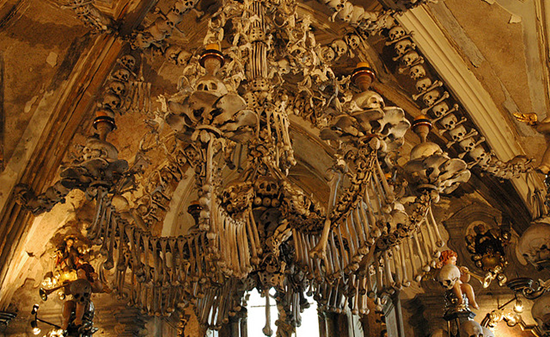
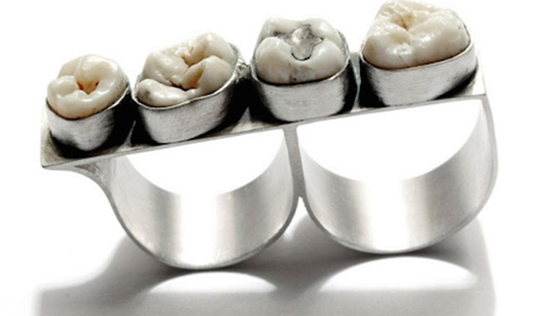
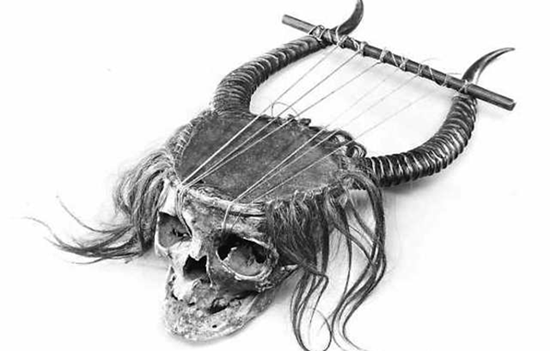
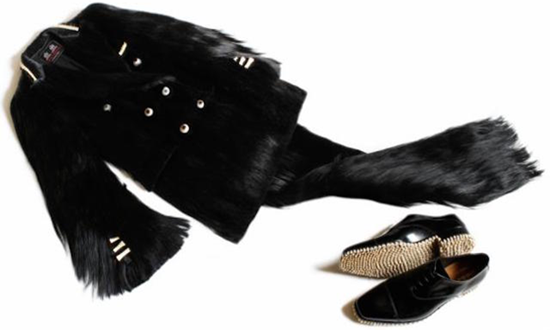
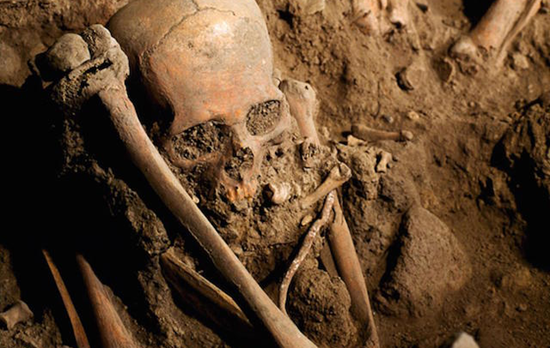
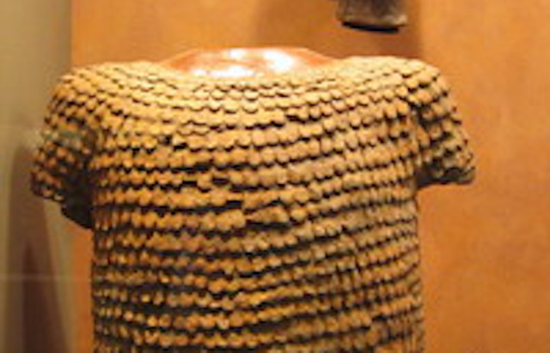


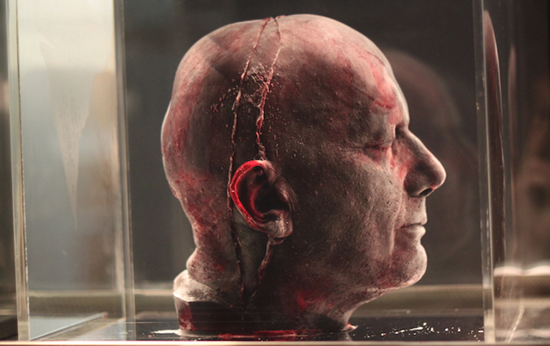
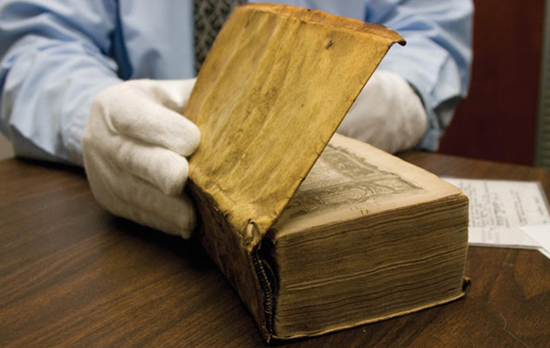
No comments:
Post a Comment
Please adhere to proper blog etiquette when posting your comments. This blog owner will exercise his absolution discretion in allowing or rejecting any comments that are deemed seditious, defamatory, libelous, racist, vulgar, insulting, and other remarks that exhibit similar characteristics. If you insist on using anonymous comments, please write your name or other IDs at the end of your message.